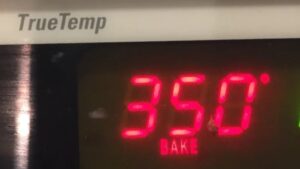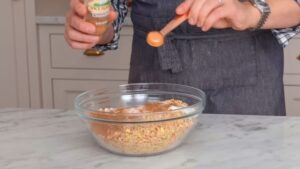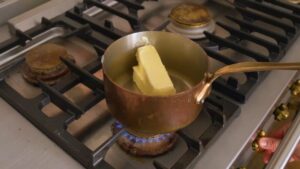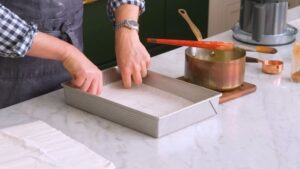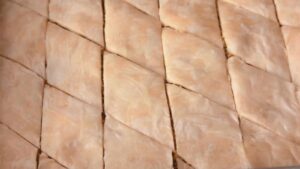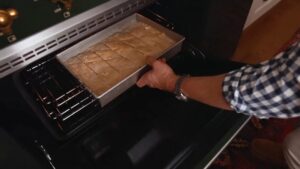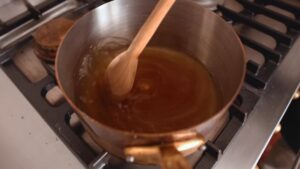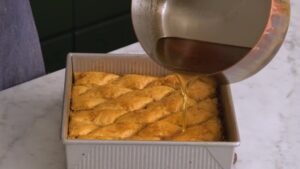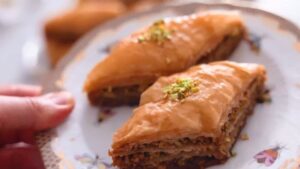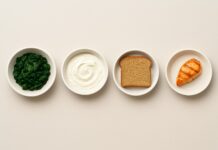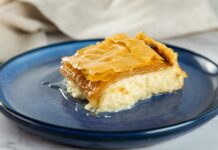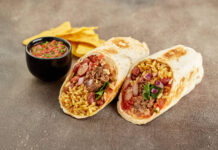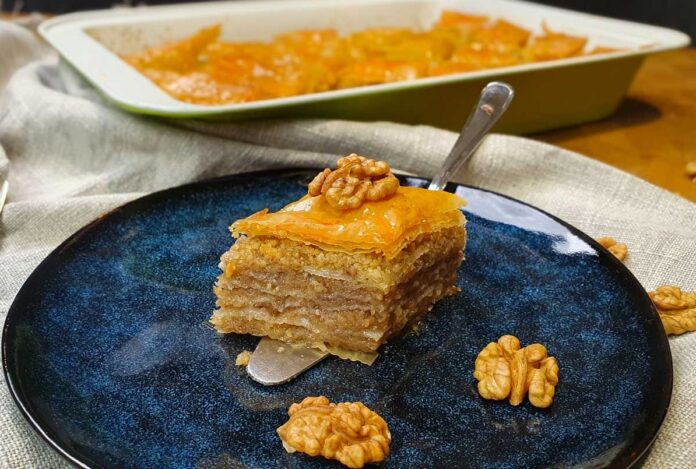
Greek baklava is all about crispy layers of phyllo, chopped nuts, sweet syrup, and pure magic. It’s sticky, crunchy, buttery, and hits that perfect balance of rich and sweet. Great with coffee, killer at parties, and honestly, hard to stop eating once you start.
Baklava isn’t just Greek, though. It’s a big deal all across the Balkans—places like Serbia, Bosnia, and Bulgaria all have their own spins.
Turkey claims it too, which has stirred up a lot of “who-made-it-first” drama over the years. Doesn’t really matter who did it first… what matters is how good it tastes.
Here, you’re getting the Greek version—crispy, golden, and soaked in just enough syrup to keep things sticky but not soggy. Let’s get into it.

Traditional Greek Baklava
Equipment
- 9x13-inch baking dish
- Sharp knife (or pizza cutter)
- Pastry brush
- Mixing bowls
- Saucepan
- Measuring Cups and Spoons
- Food processor or knife (for chopping nuts)
- Damp towel (to cover phyllo while working)
Ingredients
For the Baklava Layers:
- 1 package 16 oz phyllo dough, thawed
- 2 cups walnuts finely chopped
- 1 cup pistachios or almonds finely chopped (optional mix)
- 1 tsp ground cinnamon
- 1/2 tsp ground cloves optional, but adds warmth
- 1 cup 2 sticks unsalted butter, melted
For the Syrup:
- 1 cup water
- 1 cup granulated sugar
- 1/2 cup honey
- 1 tbsp lemon juice
- 1 strip lemon peel or 1 tsp zest
- 1 small cinnamon stick optional
Instructions
- Preheat oven to 350°F (175°C).
- Prepare the nut mixture: Combine chopped nuts, cinnamon, and cloves in a bowl. Set aside.
- Melt the butter: Keep it warm for brushing each phyllo layer.
- Unpack the phyllo dough: Keep it covered with a damp towel to prevent drying out.
- Begin layering the baklava:Brush the bottom of the baking dish with melted butter.Layer 8 sheets of phyllo, one at a time, brushing each with butter.Sprinkle a thin layer (2–3 tbsp) of the nut mixture.Add 2 more phyllo sheets, brushing each with butter.Repeat layers of nuts and 2 sheets of phyllo until all the nut mixture is used.Finish with 6–8 more buttered phyllo sheets.
- Cut before baking: Slice into diamonds or squares using a sharp knife, cutting all the way through.
- Bake: Place in the oven for 45–50 minutes, or until golden and crisp.
- Prepare the syrup while baking:In a saucepan, combine water, sugar, honey, lemon juice, lemon peel, and cinnamon stick.Bring to a boil, then simmer for 10 minutes.Remove from heat and let cool completely.
- Pour the syrup: Immediately after removing the baklava from the oven, pour the cooled syrup evenly over the hot pastry.
- Let it rest: Cool completely and let it sit for several hours (or overnight) for full flavor and syrup absorption.
- Serve: Enjoy a piece on its own or pair with coffee or tea.
Video
Notes
- Cut before baking to avoid crumbling phyllo.
- Keep phyllo covered with a damp towel while working—it dries out quickly.
- Don’t rush the syrup: Let it cool before pouring over the hot baklava for the best texture.
- Reduce sweetness by slightly decreasing the honey in the syrup.
- Toast the nuts lightly beforehand for a richer flavor and crunch.
FAQs
Is there a difference between Turkish and Greek baklava?
Greek baklava usually uses walnuts, honey, and spices like cinnamon. Turkish baklava sticks to pistachios and a sugar-lemon syrup, no honey. Texture and sweetness hit different—Greek is spicier and heavier, Turkish is more delicate and clean.
Can I make baklava without phyllo dough?
Phyllo is essential. Nothing else gives you those thin, crispy layers. Puff pastry or shortcrust won’t come close. Handle the phyllo gently, keep it covered so it doesn’t dry out, and don’t overthink it.
Why did my baklava turn out soggy?
You either poured hot syrup on hot baklava, or you underbaked it. Syrup needs to hit hot, crisp layers to absorb right. Always use cool syrup on fresh-from-the-oven baklava, and bake until it’s properly golden and crisp.
How fine should I chop the nuts?
Chop them small enough to layer evenly, but not into powder. You want a rough, consistent mix with no big chunks—enough texture to bite into, but fine enough to hold together.
Can I skip the syrup and just use honey?
Pure honey is too thick and won’t soak in the way syrup does. You’ll end up with dry spots and an overly sweet, sticky top. The syrup blend makes everything balance—flavor, texture, and sweetness.
Last Words
Greek baklava is that rare kind of dessert that doesn’t need any hype. It’s rich, crispy, sweet in the right way, and built from simple stuff done right. If you followed along, you’ve got what it takes to make it legit.
Mess with the nuts if you want. Add your own spice combo. Just don’t skip the syrup timing or rush it out of the pan. Let it cool, let it soak, and then take your time with that first bite.
If someone wants to argue about where baklava really comes from, let them. You’ve got better things to do—like enjoy it.

